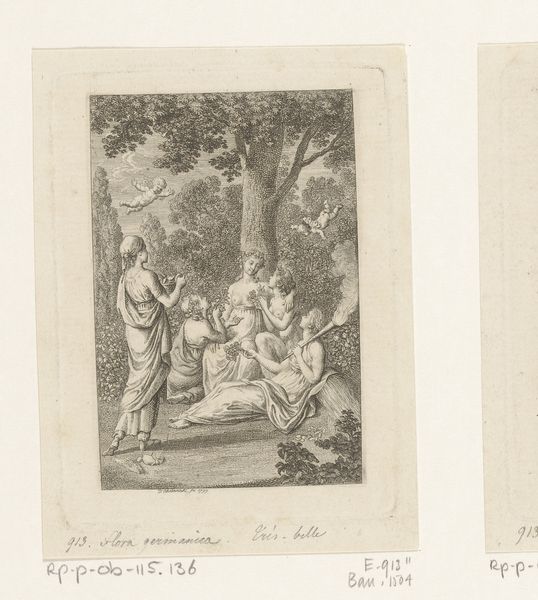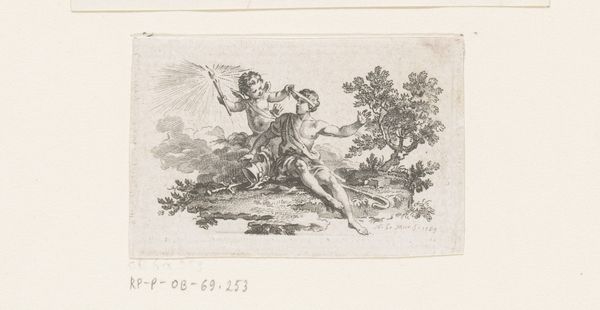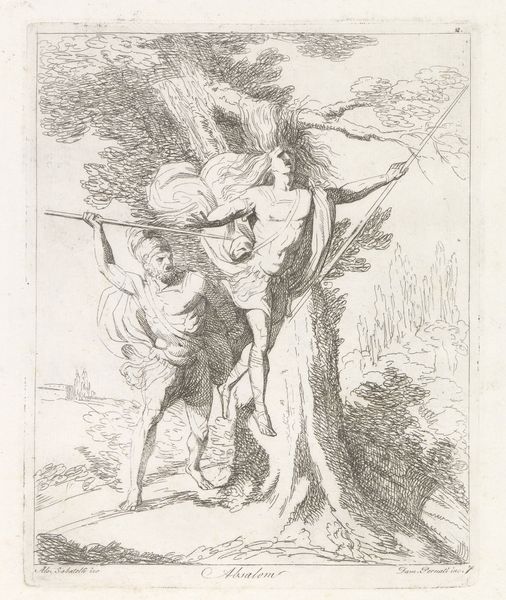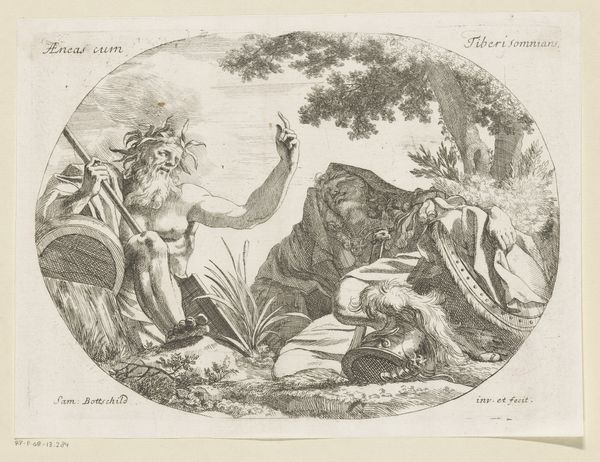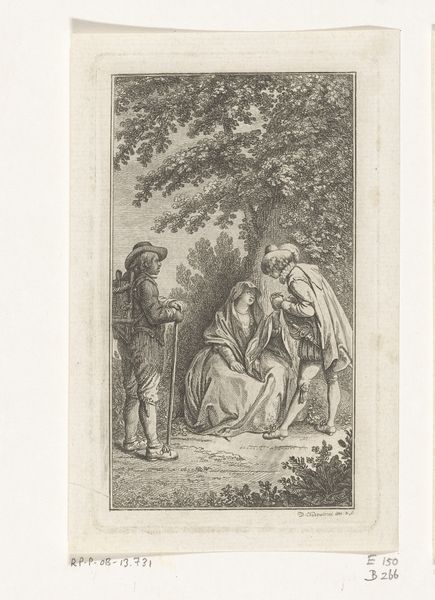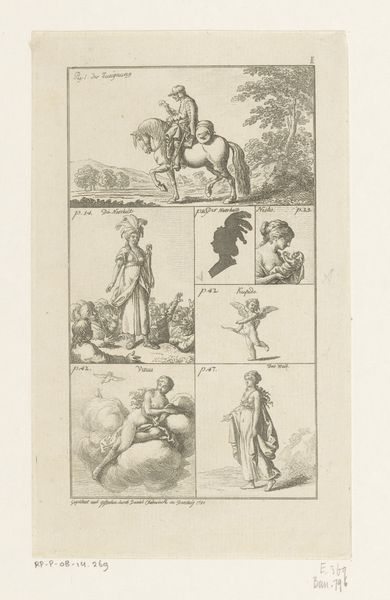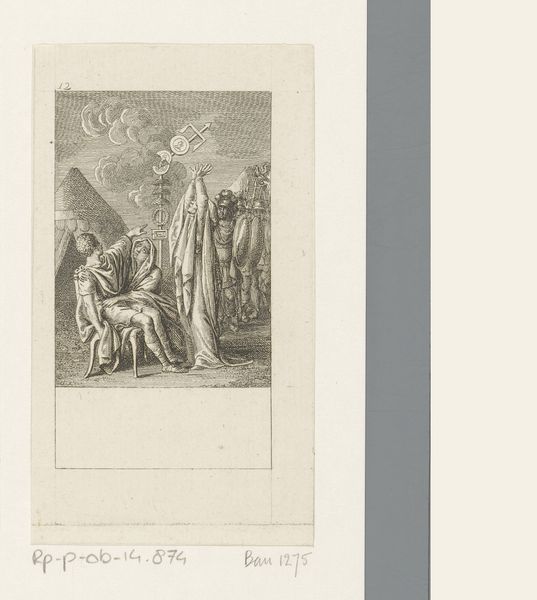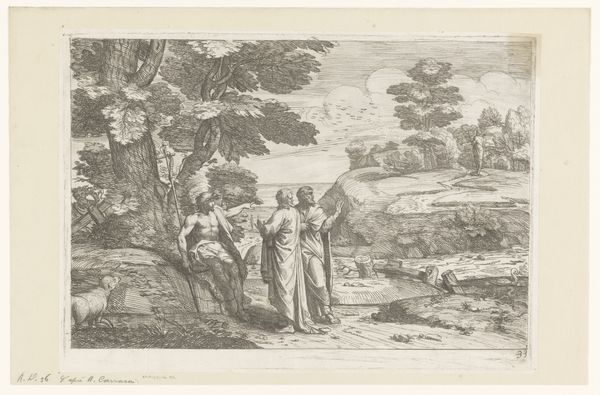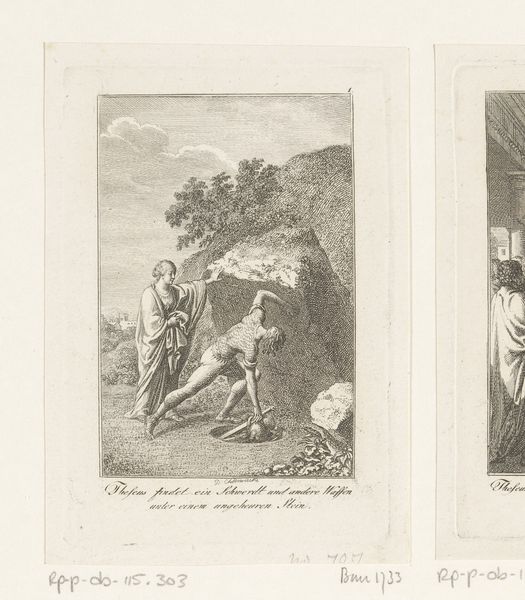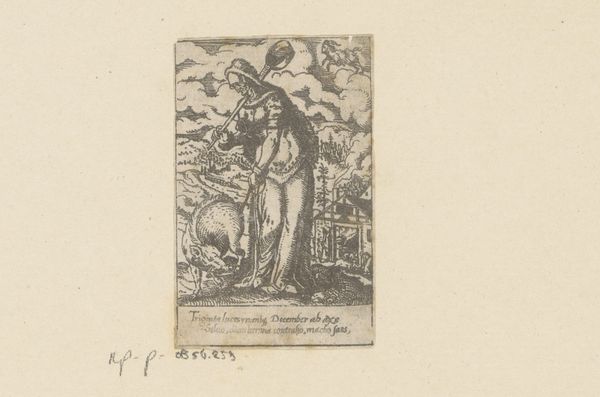
engraving
#
portrait
#
baroque
#
old engraving style
#
figuration
#
line
#
history-painting
#
engraving
Dimensions: height 109 mm, width 63 mm
Copyright: Rijks Museum: Open Domain
This engraving of Saint Joseph with a lily was made by Sébastien Leclerc the First, a French artist, in the late 17th or early 18th century. The image suggests a moment of gentle contemplation. Joseph, identified by his halo, stands in a landscape, holding a lily, a symbol of purity and also associated with Saint Joseph's role as the protector of the Virgin Mary. Leclerc was active during the reign of Louis XIV, a period when the Catholic Church wielded considerable influence in France. Leclerc himself worked for the court, producing designs for tapestries and prints that promoted the king's image. The market for devotional images was driven by the social conditions of the time. Religious prints provided guidance and comfort to a population that had experienced religious wars and social unrest. Leclerc's image of Saint Joseph, therefore, offered a reminder of faith, stability, and divine protection. To understand this print better, we could examine the wider context of religious art in 17th and 18th century France, including prints produced by the Royal Academy of Painting and Sculpture.
Comments
No comments
Be the first to comment and join the conversation on the ultimate creative platform.
